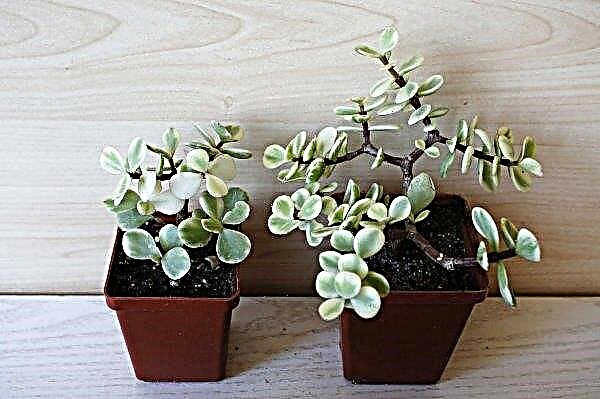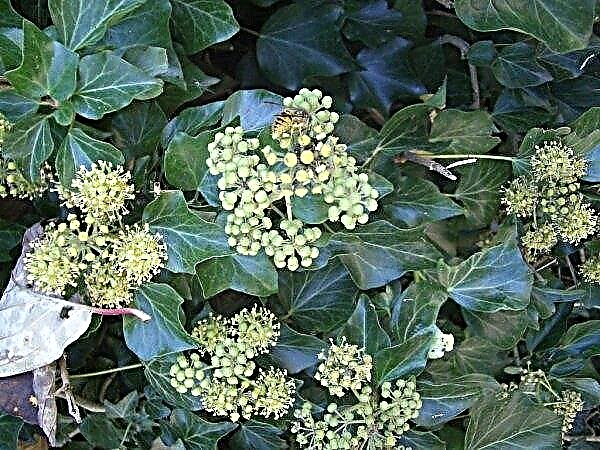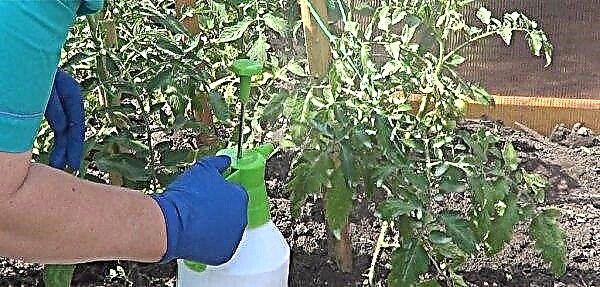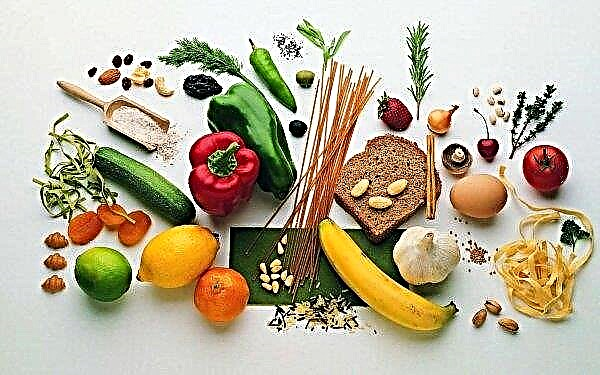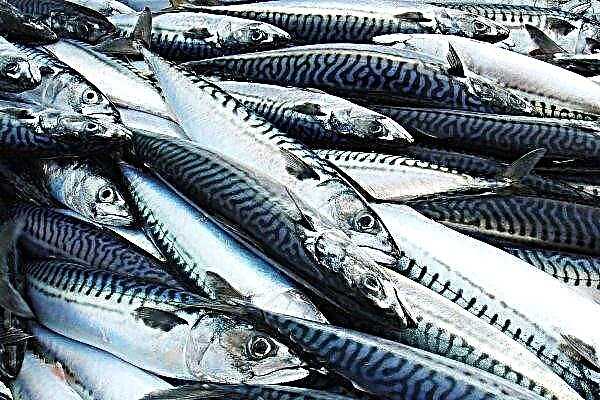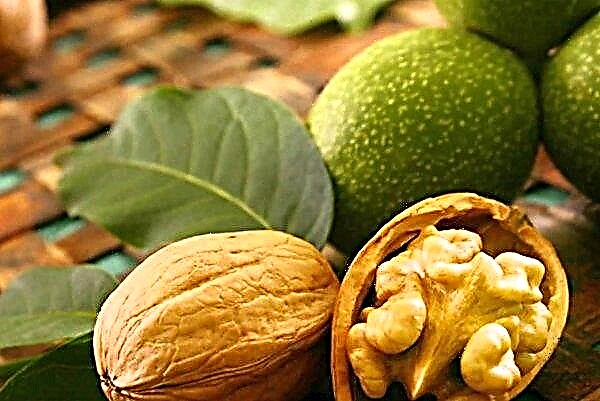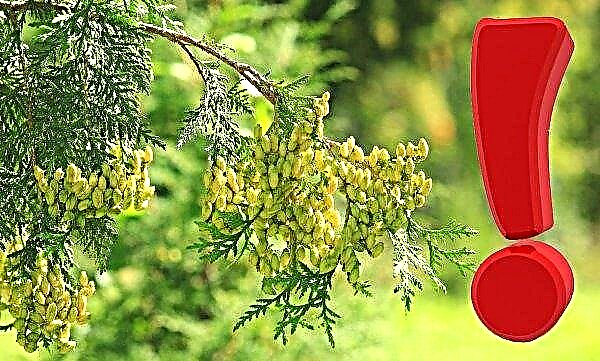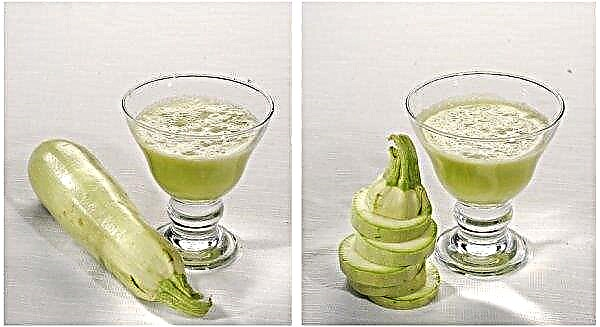The “smile” pumpkin variety was only about 15 years old and was bred by Russian breeders, since there was a need to create a pumpkin variety that can be grown in cool and even harsh weather, not only in the southern regions, but also in the more northern ones. This unusual variety will be discussed in this article.
Grade description
The attractive, even funny, appearance of this pumpkin variety can cause a smile - perhaps that is why it got such an interesting name.
| Appearance | bushy plant with short shoots of not more than 6 pcs., whose length reaches 1 m. In total, there are 10-15 pumpkins on the bush. |
| Fruit size | small, maximum weight 1 kg, average fruit 500–700 g |
| Fruit shape | spherical, segmented |
| Leaf shape | large, pentagonal, patterned |
| Colour | bright orange with bright stripes |
| Flowers | orange, yellow, with a pleasant aroma |
| Seeds | smooth, white, oval, small amount |
| Peel | hard and thick, well removed |
| Peduncle | ribbed |
| Root | fragile, easily injured |
| Pulp | deep orange, dense, not very juicy, with a slight crunch |
Advantages and disadvantages
- The advantages of the “smile” variety include the following pumpkin characteristics:
- easy to grow, does not require special conditions and care;
- good adaptation to landing conditions;
- rapid ripening in 80–85 days;
- high productivity;
- tolerates weather changes, can successfully survive possible spring frosts thanks to the derived cold resistance;
- thanks to the hard and thick peel it is transported without damage;
- sweet taste with fruity aroma and hints of melon;
- during storage, the taste characteristics of the fruit are improved;
- plants grow compactly, do not throw out long, braided shoots;
- diet product.
The disadvantages of the variety include the possibility of getting rot in conditions of high humidity.
Important! For prevention, experienced gardeners use wooden planks or other materials, placing them under the fruits and protecting them from constant contact with moist soil, thereby reducing the risk of putrefactive disease.
Planting seeds directly in open ground
Although the variety “smile” is considered cold-resistant, the seeds are planted, unlike seedlings, only in warm soil. A pair of prepared seeds is placed in each well, and after emergence, the weakest seedling is removed.
To prepare the seeds for sowing, the day before they are pre-soaked:
- in a solution of growth stimulants, for which you can use aloe juice and vitamin C;
- in a solution of fungicides;
- in warm water.

The timing
Since direct sowing can be carried out only when the soil has warmed up enough and the threat of frost on the ground has passed, it is optimal to carry out this procedure in late May - early June. During this period, the earth, even in cool, night time, is already quite warm and its temperature is 10–12 ° С. If an abnormal decrease in temperature is expected, to preserve the viability of seedlings, they are covered with paper caps or constructions of plastic bottles.
Did you know? India, China and Russia are pumpkin champions.
Seat selection and crop rotation
When choosing the corner where the pumpkin “smile” will grow, it is worth considering the following factors that are directly related to its fertility and successful growth:
- the place should be well lit, and also protected from strong gusts of wind and drafts; well, if it is the south or southwest side of buildings, fences;
- the soil should be light loamy, sandy loam;
- good soil dressing is needed.
You can plant a pumpkin at the site of the former planting of onions, cabbage, legumes or root crops. Often it can be found along the edges of potato beds. It is not advisable to plant a pumpkin in the place where before it grew cucumbers, zucchini, squash.
Bed preparation
Before direct planting of the “smile” seeds in the soil, it is necessary to dig it to a depth of 30 cm. In the process of digging, the soil is fertilized by introducing organic fertilizers and wood ash.
It is also worthwhile to conduct a soil study, having studied:
- acidity;
- structure.
Important! After harvesting and before planting a new one, you can sow siderates - plants that improve the structure of the soil, inhibit weeds and enrich the soil with nitrogen.
To do this, apply:
- lime;
- peat;
- sand;
- dolomite flour.

Sowing pattern
Sow pumpkin seeds according to this scheme:
- After digging and fertilizing the earth, small holes are created in it, where the prepared seeds are placed. They are deepened by 5-7 cm.
- The distance between the holes should be 70 × 70 cm or 75 × 75 cm; it can be slightly increased, but not less than these values.
- Seeds are instilled and watered with warm water.
- Then, mulching is used, which will avoid premature evaporation of moisture under the sun, since the sowing site should be well warmed up and have enough light to ripen the fruit.
Follow-up care
After the seedlings sprout and upon reaching a value of 3-5 cm, they need to be examined, leaving one, the strongest plant in each hole. The main care is to control the appearance of weeds, which can interfere with the proper development and growth of the pumpkin bush, taking away food and moisture.
Did you know? On the pumpkin bush there are flowers of male and female type. Men bloom first, and women eventually turn into ovary and fetus.
Also, the recommendations of specialists in the cultivation of "smile" read:
- you should carefully move around the bushes in the process of their growth, since the variety has fragile shoots that can easily be damaged and cause direct damage to the fertility of the bush;
- When planning to grow a pumpkin of a larger size than the average, characteristic of this variety - you should get rid of all the ovaries, leaving only one;
- to limit the growth of the bush, you can resort to planting corn or sunflower around.
Watering
This plant loves water and absorbs moisture from the soil well; however, the water also evaporates well due to the large size of the leaves of the bush. Even before germination, the soil should be well moistened, but not wet. After the appearance of the ovary, the irrigation volume is reduced. Warm water is suitable for irrigation, which will provide good yield, and this is facilitated by the regularity of the process. Experts recommend using either drip irrigation, which can maintain an optimal soil condition even in a particularly dry period, or top spraying, which should be carried out in the morning so that the leaves absorb maximum moisture during the day, but do not remain wet at night and do not get wet.
Experts recommend using either drip irrigation, which can maintain an optimal soil condition even in a particularly dry period, or top spraying, which should be carried out in the morning so that the leaves absorb maximum moisture during the day, but do not remain wet at night and do not get wet.
Fertilizer application
Fertilizing the plant is necessary - first of all, before making pinching.
For soil nutrition use:
- organic fertilizers;
- herbal infusions with the addition of wood ash.
- nitrophoska 30–40 g;
- azofoska 30–40 g;
- superphosphate 25-30 g;
- potassium sulfate 25 g
Feeding can be carried out 2-3 times a month - for this, 1-2 liters of fertilizer are poured under the bush, and then a bucket of warm water. Thus, fertilizers penetrate well into the ground and reach the rhizome of the bush.
Topping
The main, necessary care for the bush consists in pinching - removing the upper bud, which allows the plant not only to begin the growth process in length, but also to let out side shoots. Pinching occurs as follows: you should count 5 leaves from the first ovary on the main stem and cut off everything else. The plant will begin to actively form lateral processes with female-type flowers. This process allows you to control the number of pumpkins in the future harvest, as well as their ripening time.
Weeding and cultivation
These processes should be carried out regularly. For a good harvest, the bush of the “smile” variety needs loose soil and high-quality weed weeding, which can harm the bush by taking moisture and food.
Harvesting and storage
Harvesting rules are as follows:
- the fruits are cut, not waiting until they reach a large size;
- it is best to harvest in dry weather, before the start of frost, when the shoots begin to wither;
- when assembling it is necessary to leave a tail - a stalk of 5 cm, which will help preserve the vegetable for a longer period.
To store the pumpkin and prevent its spoilage, the vegetable must be well dried for better hardening of the peel and put on shelves or shelves in one layer. This may be a living room, for example, a place under the bed. However, a dry pantry is best suited, where the air warms up to 15–22 ° C. So it can be stored until mid-spring.
The pleasant taste and aroma, as well as the attractive look of the “smile”, please many gardeners, since this variety does not require special growing and care conditions, except for regular watering, but it brings a good harvest even in cool regions.

